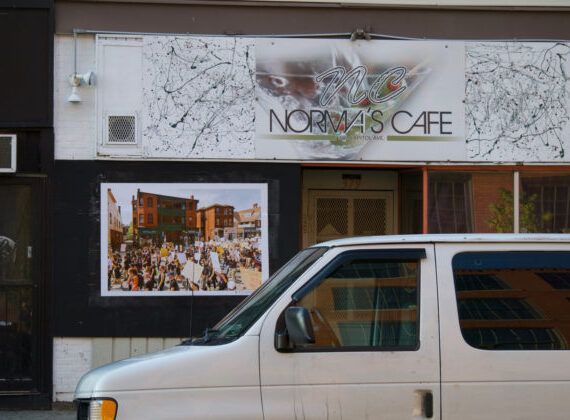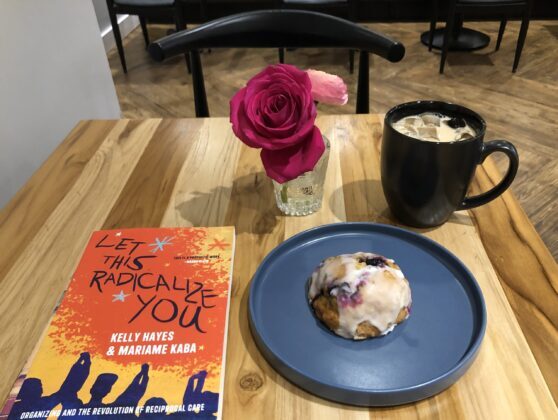Connecticut’s public agencies tasked with managing public transportation services are currently planning the future of transportation for the state. The state Department of Transportation is in the midst of a widespread campaign called Transform CT to solicit public input on its 50 year transportation plan. The Capitol Region Council of Governments will soon begin a comprehensive evaluation of bus lines in the Hartford region.
Both of these efforts touch the city of Hartford’s bus network. So what we do want? What kinds of things should we be asking for? When it comes to improving the bus system, this can be a complex and confusing question even for those of us who ride the bus daily. Many of us feel frustrated with the bus service in Hartford and can cite a litany of complaints—too many connections, no crosstown routes, lack of bus shelters, slow travel speeds and lengthy trips, poor service in the evenings. It’s a big list.
And yet every day (more so on weekdays) all these buses are out driving around the city, often filled with passengers, every single one of them either heading toward or away from downtown.
To get past this vague but overwhelming sense that we could use a better bus system here, we can take some cues from Jarrett Walker’s book Human Transit: How Clearer Thinking about Public Transit Can Enrich Our Communities and Our Lives. Walker suggests that we can start with two factors that affect the performance of a transit system—frequency and span.
Walker is a transportation planner and consultant, but he comes to transportation planning with a background in studying human cultures and languages rather than engineering or management. His is a book that pays close attention to language—for instance, Walker points out the problems with transit planners’ use of the term “captive” to describe people who are forced to use public transportation because they do not own a car. In another instance he argues that referring to transit “connections” is better than calling them “transfers” when one has to switch to a second bus on a given journey because the former sounds more positive.
Walker is known for being a champion for frequency—for more buses to run more often on a given line as the way to serve and attract more riders. (Other transit planners believe that the comfort and aesthetics of transportation vehicles is equally, if not more, important.) Frequency has become Walker’s rallying cry. “Frequency is freedom,” he exclaims. Walker’s argument is that the more often a bus comes to your bus stop matters even more than the average speed that your bus travels once you get going. This seems counter-intuitive, even irrelevant, for trips made with a car. With a personal automobile frequency is never an issue. The car is always there and ready to depart when you are. For bus travel, it’s the waiting that can really kill your sense of mobility.
Some cities see Walker’s point and have planned their systems with increased frequency in mind. Some cities, like Portland, Oregon, even make special maps to show only the bus lines that are running on a frequent schedule throughout the day. It’s an interesting idea—rather than showing you just a map of the system in space, these ‘Frequent Service’ maps add a useful dimension of time to their presentation—your time in fact, the time you won’t have to waste waiting for a bus to come.

I wanted to see what such a map would look like for Hartford. Do we have frequent bus service here and what does it look like? So I made some maps and here’s what I found. This first map shows the bus lines that run every 20 minutes or less from about 9am to 6pm at night. (After 7pm, none of the city’s buses run anywhere near a frequent schedule.)

This first map looks alright—there’s service to the North End, the Blue Hills, to and from the West Hartford Center, Frog Hollow and Parkville, Barry Square and the South End. Even a little stub line over to East Hartford, but it doesn’t get you anywhere near the main drag of Burnside Ave. The western half of the South End doesn’t get much frequent service, nor does the South West, but the latter in particular is a less dense, more car-friendly neighborhood.
But before we begin marketing and celebrating Hartford’s frequent bus service with this map, we have to ask whether once every 20 minutes is really all that frequent for a bus line? Most of us will say no—that for true, robust, walk-out-the-door-and-catch-a-bus transportation, it has got to be more often than that. And this accords with what the planners think—it turns out that the commonly accepted time between buses to call a given line ‘frequent’ is 15 minutes or less. Ideally it’s more like 12, but 15 will have to do for most towns and cities in the U.S. If we apply this more stringent requirement, what does the Frequent Bus Line map look like now? The result is below in this second map.

The difference is pretty stark. There are only four lines that run every 15 minutes or less throughout the daytime. We’re not likely to see CT Transit publish such a map because it would call attention to the lack of frequency across the city and metro Hartford area. Frequency costs money. If you double the frequency, you double your costs. So making lines run more often will take the political will to experiment with providing more service. So let’s cut our transit system a little break, for now, and keep the first map, with its 20 minute intervals, as a reference point.
This map isn’t that bad, and in some ways we should be pleased with this level of frequency given a state Department of Transportation that is still overwhelmingly committed to the private automobile as a primary means of travel. But there is more than just frequency to worry about. There’s also the range of time throughout the day that a given bus runs. Jarrett Walker and other transportation planners call this measure span: “Closely related to frequency is the concept of span, which denotes the times of day when service begins and ends, on each day of the week.”
It is this connection—between frequency and span—that is the real problem in Hartford. To be precise, it is the disconnection between frequency and span that is the problem. The span on buses like the 60-66 lines that run down Farmington Ave and the 31 that runs on Park Street to Parkville is long, from 5am to midnight. But after 6pm their frequencies plummet. All of a sudden the bus line that had been available once every 10 minutes during the day tapers to just once every 30 minutes and then to just once an hour or even less. It’s a steep drop in service and this is one of the primary reasons that, though the city’s bus lines operate frequently during the day, they are seen as frustrating and perhaps even useless by many. Unless your job or social activity has a firm, fixed end point at the same time each and every day – say 5:35 PM on the nose – then you’re at risk of getting caught at work, at the library, or at the bar without a ride home anytime soon. The drop in frequency after 6pm in Hartford, and in other cities in Connecticut, is a case where inadequate supply of a service drives away demand for that service.
Frequency and span are two basic components (along with a number of others beyond the scope of this analysis) that we need to reconsider and pay attention to as we build a more nimble, attractive, and useful transit system that focuses on serving its current users while attracting new ones. Jarrett Walker reminds us that we need to connect these two factors: “Both frequency and span are fundamental features of transit systems that feel empowering.”
New Haven’s Mayor Toni Harp and her new transit chief, Doug Hausladen, recently called on the state to increase bus service in the evening hours in New Haven. More frequency on all existing lines after dark is just one small improvement that needs to be made, but it’s a good place to start. We can build on the presence and success of frequent buses during the day in our city. As residents of Hartford and the region we can and should demand such improvements in service.

Justin Eichenlaub lives in Hartford and is an advocate for better public transportation, bicycling, and walking. He is a co-founder of Post-Car Press and Consulting. Follow him on twitter @Mixed_terrain.



Richard
‘So what do we want? What kinds of things should we be asking for? When it comes to improving the bus system, this can be a complex and confusing question even for those of us who ride the bus daily.”
I am just wondering if you have done a survey of riders on routes here in Hartford as a steering wheel for you project and for guidance, yes exp. guidance. Consultants have long come into town and have told us what is good for us and as most of us know who have been here for years that 9 times out of ten its bull.
I like where some of this thinking is going and want to ask. Do you think if the ideas expressed in your posting come to past that more folks will take the bus? The big one would be, if there are every few people to ride the bus at these less frequent bus hours, (my 1145PM bus has 4 riders) then why should there be more buses? This I am afraid could turn into a thing like that DASH bus going around and around with no one riding?
So if you haven’t let me suggest to go to the people, we are not all that hard to find and ask us what we want. Let’s not be fooled into thinking that that a small group of people can make any decisions for all of us. A good example of this is back say 4 years ago there was no bus running on New Britain Ave. Well due to the changing neighborhoods and changing riders people petitioned the Ct. Transit and they now have a bus on that route that runs the same nightly as the other main routes. So what I am saying is go to the people and I mean the people who wait daily. Another good place to start would be finding out who takes the bus at night, why we take the bus at night, and what buses and times are we riding.
I have been walking and taking the bus everywhere in this town for 37 years as I do not, will not and can not drive a car and the concerns you have expressed are not really my top concerns. I fully realize that this is a problem having traveled to all of the smaller cities in New England, and taking the bus to get around once there. There could be improvements here but also we fare much better than many cities. This is not to excuse the short comings at all.
I await the result of your survey of the people and their concerns. Oh one last thing, let us talk about true concerns here and true feasibility. Not some pipe dream or some “wouldn’t it be nice.” One good laugh some of us had a few years back was the idea of a grocery store downtown. Oh, everyone said wouldn’t it be nice to have a grocery store downtown. Yeah, all those who lived downtown still went in their car and drove to the large supermarket, and there just wasn’t enough people to support a store, and the store went out of business. This “wouldn’t it be nice” and “living up there above,” is the real deal crap-o-la called in my book misguided reformism that is happening more and more frequently. Think real need please.
There are many more points that need to be adressed here but I step aside for others to express.
Justin Eichenlaub
Richard, thanks for your comment and great points! I agree with almost everything you say here. This post is really just a small part of the conversation, and it definitely reflects my personal concerns about the bus system (i.e. frequency after dark) but this is just one concern of mine. And while I haven’t yet done a survey (I’m an advocate trying to organize folks) such a survey would be incredibly helpful to see, and I’m sure there were would be many folks looking for better bus frequency after 6pm.
I’m glad to hear that the 37/39 lines on New Britain were added after citizens petitioned CT Transit. That’s very heartening to hear.
I wait for the bus everyday, I take it all over the city. I’ve also been talking with others who do. But I’m relatively new to the city, so I’m not trying to just do things on my own. We’re starting to organize so that individual voices on these issues can come together and work together more. I think Kerri told you about that first meeting. I hope we can meet and talk soon and that you will share more of your specific concerns, then and here in the comments.
Thanks, Justin
Justin Eichenlaub
One more quick thought, Richard. Most people, and sometimes even advocates, tend to be concerned only with what they need or want. My interest in improving the bus system for Hartford goes beyond that. I’m buying a house in the South West of Hartford and sure, I’d love to have a direct cross-town route from the South End neighborhoods to the West End. But not many others might want that route. Or there might be a more pressing need for a different route — a direct route from the Blue Hills to Park Street for instance, and I’ll happily support that happening first or at the expense of my own pet route. I think the democratic, demand and need driven approach you’re suggesting is the only way to go. The only thing to watch out for is that sometimes poor service levels can bury and hide demand that would be there if buses ran more often, more places.
– Justin